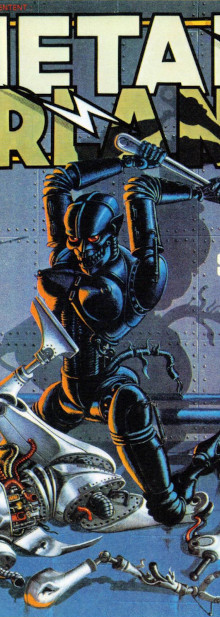
Above: Akira - The bomb

Above: Comiket Tokyo, a huge Japanese comic fair held
multiple times a year.
Comics are still a big industry and the largest in the world is in Japan, followed by France and the USA. Japan has a long history with comics (Manga) and the market there is huge with lots of physical comic books sold and massive Manga shows. I've been watching the Cartoonist Kayfabe YouTube channel and my eyes have been opened to just how big comics are over there.

France is the second largest market for comic books (called "Bande Dessinée" or "BD"). The Guardian have a decent article online about the large comic convention held in Angoulême, France, every year:
France’s comic-book tradition is hitting new heights.
Left: At the Angoulême comics fair. Photo credit: Yohan Bonnet/AFP/Getty Images in The Guardian
Like the Japanese, the French do comics differently to us in the UK. Whereas the UK public has mostly seen "comics" as a form of entertainment for children, the French have seen comics as an art form and, as such, given them much more respect. The gap in perception has narrowed over the past two decades but I suspect it is still there. When I first looked at French comics the difference in the culture was like night and day. In the 1980's I started to read BD by the likes of Moebius, Bilal and Druillet: the French magazine Métal Hurlant was seminal at this time (and its American cousin Heavy Metal). Manga has made big inroads to the French market over the past few years: over half the market according to The Guardian article.
Right: Métal Hurlant no.8. Cover (detail) by Jean-Michel Nicollet.
With manga, I certainly looked at it back in the day (mid-80's) but I think this was just before of the good sort was available.
I just couldn't get past the way faces and eyes were drawn, or the often childish looking characters. Looking back now, I know I jumped to
entirely wrong conclusions, but with so many other great comics coming online to me at the time, I never found time to take another
look.
One of the best known Japanese comics, and perhaps the biggest hit of them all, is Katsuhiro Otomo's Akira, first published in Japan in 1982 with a first edition in English (Marvel's Epic line) in 1988. To many, this was the book that completely changed their perception of manga.
I might have glanced at Akira years ago but it would have been a superficial look. The guys on the Kayfabe channel are massive fans of Otomo and have been going through his comics and paying serious and deserved attention to their quality. It's been enough to have me taking a proper look. I've been lucky that my library (Edinburgh Central) has a fairly decent selection of comics and graphics novels so, when I saw they had the first few Akira volumes on the shelf, I knew what I had to do.
I've now read volumes one and two, and have three and four out on loan to read. Each is a thick black and white book but not heavy going in any way and the story moves along briskly. It's set in a near future "Neo-Tokyo", rebuilt a few decades after a World War and after massive devastation caused by a "new type" of bomb dropped at its center (see top image). A cyber-punk type future we've seen a lot more of now but here is a well paced story, fresh and well written, with great art. Otomo excels at detailed buildings and backgrounds, machines and action.
The comic reads surprisingly well and looks beautiful too: I am ashamed I took so long to pick it up but would recommend it to anyone.
Below: A panel from Akira. © Katsuhiro Otomo.



